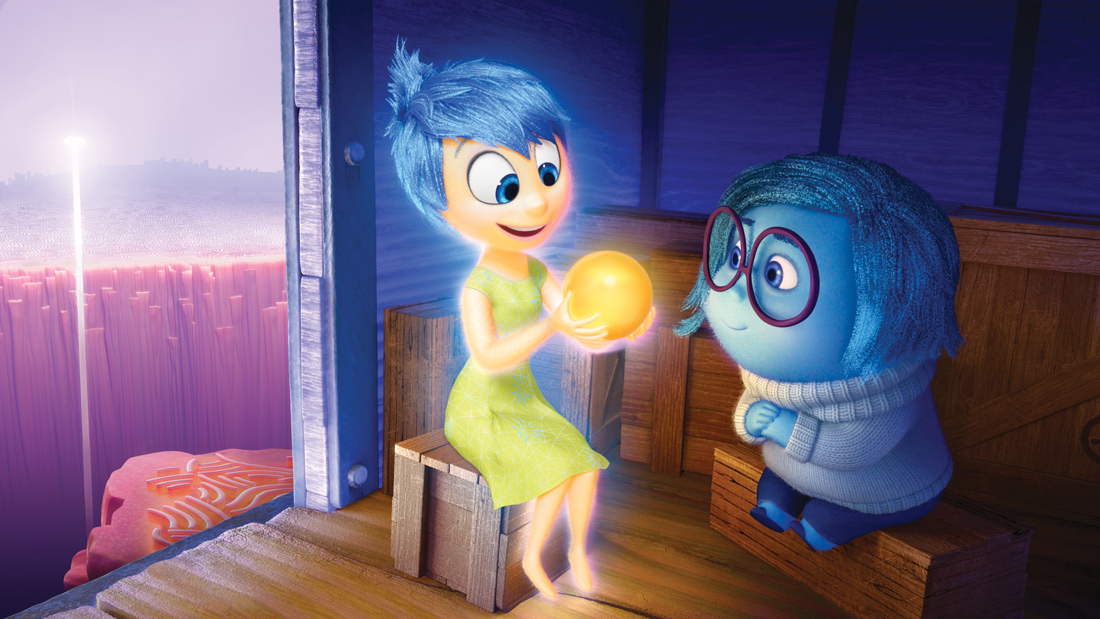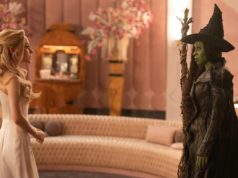Ladies and gentlemen, normal service has resumed. With the release of Inside Out, Pixar Studios is once again making masterpieces. I repeat, normal service has resumed.
After an unparalleled run of success, the fabled animation studio has been flailing for direction ever since the turn of the decade. Cars 2 wasn’t as bad as everyone said, but Brave was their first attempt at a female-centric story, and it failed. Monsters University rediscovered the studio’s wit and complex storytelling, but it wasn’t until this luminescent story about a girl’s inner life that Pixar finally found its heart again.
The bulk of the film takes place inside the mind of Riley Anderson (voiced by Kaitlyn Dias), a hockey-playing 11-year-old from Minnesota. The main characters are Riley’s five primary emotions, who sit at an instrument panel and take turns controlling her mental state. Our narrator is Joy (voiced by Amy Poehler), who struggles to stay upbeat after Riley’s parents (voiced by Kyle MacLachlan and Diane Lane) uproot her and relocate to San Francisco. Amid the upheaval, Joy’s tussle with Sadness (voiced by Phyllis Smith) over one of Riley’s key memories leaves them both stranded in the recesses of her mind and needing to get back to headquarters before remaining emotions Anger, Disgust, and Fear (voiced by Lewis Black, Mindy Kaling, and Bill Hader) botch Riley’s life irrevocably.
The director and co-writer here is Pete Docter, who has not helmed a Pixar movie since 2009’s Up. His imagination runs riot creating Riley’s mindscape, and his animators conjure up dazzlingly ingenious scenes when Joy and Sadness venture into Riley’s abstract thoughts and become rendered in different stages of abstraction, or when they descend into her subconscious and stir up her darkest thoughts. The explanation of how an annoying song gets stuck in Riley’s head turns into a hilarious running gag, and Riley’s dream factory strongly resembles a Hollywood studio lot staffed by directors, actors, and crew members. Dazzling in a different sense is Riley’s dinner-table argument with her parents, when her mom and dad’s primary emotions make their first appearance. Dad gets it wrong, which prompts Mom’s anger to say, “For this we gave up that Brazilian helicopter pilot!”
Another clever touch is that the control panel grows larger and more complicated as Riley gets older. A prologue sequence takes place when she’s born and her mind is just beginning to take shape (and the control panel has only one button), and the movie’s evocation of early childhood is breathtaking. The wondrousness of that moment is balanced against the unexpectedly wrenching subplot with Bingbong (voiced by Richard Kind), Riley’s near-forgotten imaginary friend as a toddler who helps Joy and Sadness return to where they belong.
It’s easy to side with bright-eyed, dancing Joy against the irritatingly negative Sadness, who seems to screw up everything she touches, as she herself points out. The genius of this film is that the problems all stem from Joy and her desire to keep Riley’s memories as happy as possible, mirroring the pressure Riley feels to stay positive while her parents deal with troubles related to the move. Joy has to learn that Sadness has an important place, too. Riley will never feel happy again without Joy at headquarters, but Joy has to learn that it’s just as terrible if Riley never feels sad again.
Sadness is as crucial to Pixar’s other movies as she is to this one. Without that quality, the studio’s films are still bright and clever and marvelously entertaining, but no more than that (which for most studios is enough). They wouldn’t be the deeply moving works of art that they are without the kids’ toys confronting their mortality, the clownfish overprotecting his son after losing his other children, the robot pining to break through his loneliness, the old man clinging to his house because he’s still mourning his wife. To all this we can add the sadness of a girl missing Minnesota’s frozen lakes and her friends on her hockey team, which here takes on dimensions powerful enough to leave tear stains on your 3D glasses when Riley breaks down in front of her parents and tells them why she’s acting out. It’s here that Inside Out gains the status of Pixar’s greatest and most moving achievements. The studio tried telling a girl’s story once before, but this time, they have it right.
The film is accompanied by Lava, the first Pixar short film that I can remember not liking. Who cares, though? Pixar’s back in its groove again, and all’s right with the world.
[box_info]Inside Out
Voices by Amy Poehler and Phyllis Smith. Directed by Pete Docter and Ronaldo del Carmen. Written by Josh Cooley, Pete Docter, and Meg LeFauve. Rated PG.[/box_info]













For me, Bing-Bong was the biggest tearjerker. That part of the story was so powerful that my sister and I just started sobbing in the theater – much to the indignation of the other filmgoers =|